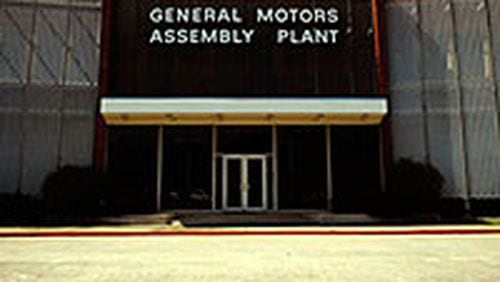The shuttered General Motors plant along the Perimeter is a faded symbol of Doraville’s glory days, an industrial fortress on a swath of land the size of 125 football fields.
It’s also the emblem of hoped-for future, a blank canvas city leaders hope will bring about a renaissance for an Atlanta suburb with a poverty rate that’s almost twice the state’s average.
Metro Atlanta has almost regained the jobs it lost to the recession, and the region’s development engines are once again being primed. Apartment construction remains hot and a recent report from a real estate services firm said office development might soon return as demand for space outpaces supply.
The rebound includes the most solid plan so far for the old GM plant site, dormant since 2008.
> RELATED: Doraville GM plant closed Sept. 26, 2008
A development team bought the plant in September. The group is drafting a vision for the 165-acre site that Doraville officials say they hope will become a new downtown for their city.
“We’ve gotten a lot of interest. Everything from the ridiculous to the sublime,” said Luke Howe, the head of economic development for Doraville, which will have to approve the site plan.
The developers, led by Atlanta-based The Integral Group, envision potential uses such as research and development facilities, a corporate campus, or a science and medical technology hub along with a walkable mix of residences, retail and green space. Nearby job hubs such as the Centers for Disease Control and Prevention, DeKalb-Peachtree Airport and the hospitals at Pill Hill in Sandy Springs could be attractive to prospective tenants and residents, they say.
Developers say their master plan is probably a few months away. Meantime, crews are starting the eight-to 10-month process of demolishing the 67-year-old factory. They’ll eventually haul away some 78,000 tons of concrete and steel by truck and train.
“We recognize that you need to create a destination, you need people, you need density,” Egbert Perry, Integral chairman and CEO, said in a recent interview. Part of that density will be achieved by going vertical. The site can have heights of eight to 13 stories, he said, depending on distance from the nearby airport.
Integral is known in Atlanta for its work to turn aging public housing complexes into mixed-income residential developments, including Centennial Place near the Georgia Dome. The firm in recent months pitched a high-rise apartment tower in Midtown and has experience with mixed-use projects in several U.S. cities.
Perry said heavy industrial is about the only thing off the table for the former GM plant, where minivans last rolled off the assembly line six years ago.
Integral officials say they have embraced a city plan for the site that includes offices, shops, parks and housing, though they are not bound by it. The team recently hired Perkins Eastman, a noted design firm whose projects include Battery Park City in New York and Target Field Station, a mixed-use transit hub near the Minnesota Twins' home in Minneapolis.
Perry said redevelopment of the GM plant will likely take a decade or more, and the total value of the project could be $500 million to $1 billion. He said his team is focused on forming a master plan, finding potential tenants and determining what the market will bear. A financing plan will follow, and some public funds through a tax allocation district will likely be in the mix.
Gritty but convenient
Roger Tutterow, a Kennesaw State University economist, said nearby freeways, MARTA rail and the connection to nearby DeKalb-Peachtree Airport that would make the GM plant appealing for redevelopment and potential corporate tenants.
The area, however, is not as affluent as its counterparts on the top end of I-285. It has a more industrial feel than other so-called “edge city” areas of metro Atlanta, such as Perimeter Center near Perimeter Mall and the Cumberland-Galleria district in Cobb County.
Doraville, a city of about 8,500 people, is a major hub for the region’s Hispanic and Asian communities. The city has a poverty rate of nearly 31 percent, almost double the state’s 17 percent rate.
Tutterow said he expects the project to be built over many years, perhaps starting with an office or research and development anchor, followed by residences for people who want to live near work or the MARTA line. Retail, he said, will likely be targeted to the office workers and residents, in contrast to the higher-end retail draws of Buckhead or the recently opened Avalon development in Alpharetta.
“It’s really not about how strong the economy is in 2015, it’s about the story of Atlanta and what its economy will look like in 2020,” Tutterow said.
The GM plant closure wiped out about a third of Doraville’s employment base and a huge chunk of its tax digest. The aftermath of the financial crisis stymied a sale of the site.
Several firms, including Integral, initially expressed interest. At one point the site was even seen as a potential site for a new Atlanta Falcons stadium. A previous finalist, New Broad Street Cos., pulled out in 2010 after DeKalb County balked on using stimulus money and other public funds to support the purchase and development.
Integral then jumped back in.
Perry said the property is very clean for a former heavy industrial site, and any liability for future clean-up falls to GM under a recent agreement involving state environmental regulators.
Building an ‘urban node’
Chris Martorella, Integral’s president of investment management, said the property will be an “urban node” with a street grid and pedestrian access to the adjacent Doraville MARTA station. Trails and a circulator bus system or other form of transit will likely connect the property to the rest of Doraville.
Martorella said designers need to begin with anchors, whether that’s major office tenants or other corporate users, or design features such as parks. The street grid design and locations of retail and residential space would follow.
“One of the challenges with a site this important is making sure you don’t do the wrong thing from the start,” Martorella said.
Howe, the economic development chief for Doraville, said the city hopes the Integral team can wrap up a site plan by February. Doraville will use that site plan to create what amounts to a custom zoning plan for the development.
This summer, Doraville leaders started the process of creating a tax allocation district, or TAD. Such districts allow agencies to float bonds and attract grants for infrastructure improvements with the debt repaid over time by rising property tax revenue from the project.
Howe said the city might be able to generate tens of millions in financing through a TAD. The TAD would also require the approval of the county and DeKalb County Schools because those governments would lose revenue upfront on the promise of greater tax collections over time. The same funding formula is used with the Atlanta Beltline.
Howe said the money likely will offset the cost of building infrastructure. Howe said “horizontal” or surface infrastructure, such as roads, sidewalks and water and sewer could cost about $75 million.
“It’s going to be a lot of work,” he said.
About the Author







